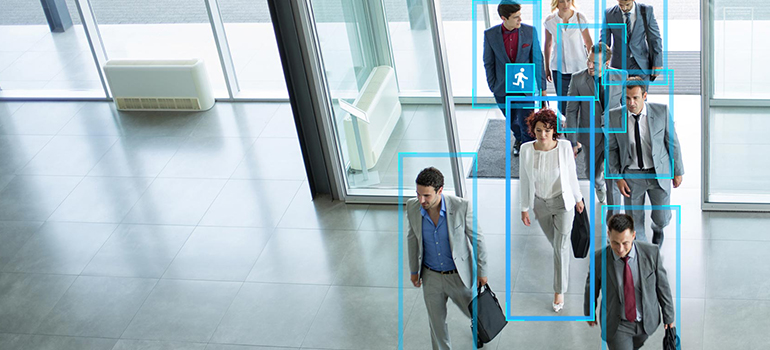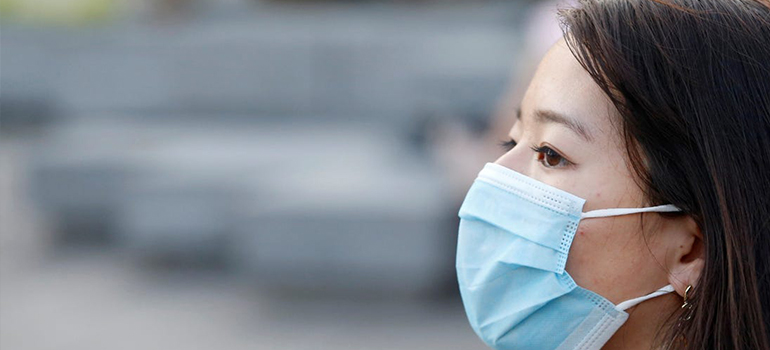The Latest Security Tech Trends in the Transport Industry
In recent years, technology has been very successful in revolutionising most, if not all, industries around the world. And while transportation has always been one of those sectors, professionals within the industry are constantly looking for innovations that can help in terms of security. The main issues facing the transport sector nowadays are fare evasion, vandalism, terrorism, and the safety of the public and passengers. Here are some of the latest trends.
Facial Recognition

With the ongoing global health crisis, facial recognition is turning out to be one of the crucial innovations for creating a more contactless environment. Facial recognition is widely used in airports, with the International Airport Review outlining how many airports across the globe now have biometric terminals. This makes the security process not only more thorough but also more streamlined for passengers. And we can expect this to be implemented across all transport industries, with The New South Wales government looking to introduce facial recognition for their transport system.
GPS Vehicle Tracking
In Australian capital cities, statistics from BITRE show that 30 percent of kilometres travelled on public transport occur on buses. For public bus companies, passenger safety, efficiency, and cost-savings are the top priorities. To address these issues, Verizon Connect explains how GPS devices can provide real-time data to monitor bus fleets. For instance, real-time mobile alerts can help reduce fuel wastage if bus drivers are idling in an excessive manner. In addition, GPS tracking can determine whether drivers are exhibiting poor habits, such as speeding or hard cornering so that these behaviours can be addressed. Lastly, GPS tracking can also improve the process of fatigue management for bus drivers who travel long distances.
Body-Worn Cameras

While this technology has always been associated with professionals who are working for law enforcement agencies, it is also being used effectively by a range of other industries including the transport industry. For instance, these cameras can help drivers and transport officers become more accountable and responsible while on the clock. In addition, it can also help them gather important evidence during an unwanted assault. In a study about body-worn cameras published in the Journal of Experimental Criminology, it was found that those who are equipped with body-worn cameras had 38.3% less use of force incidents compared to their counterparts. This technology has already been implemented with transport officers wearing them on SA trains.
Contact Tracing Technology
Due to the crowded nature of many transportation systems including trains, buses, airplanes, and boats, the integration of contact tracing is essential to promote a healthy and safe environment. Our tech solutions at Wilson Security include occupancy counting analytics, social distancing analytics, and face mask detection analytics to provide useful features that can limit the spread of the disease.
Occupancy Counting Analytics

In essence, occupancy counting analytics is powered by AI-enabled video that helps identify peak travel times and high traffic points. Organisations can take advantage of this technology by easily counting and identifying the number of people in a station or specific area. This reduces the staffing costs needed to count individuals manually, especially in transportation areas with multiple entry and exit points. It also helps areas comply with social distancing guidelines by limiting the number of individuals in an area at any given time, reducing the opportunity for viral transmissions.
Social distancing technology
In addition, social distancing tech provides alerts when social distancing violations occur and identifies hot spots that require special attention. It specifically tracks the distance between two or more passengers, enabling organisations to determine traffic patterns and make the necessary adjustments. In the long run, using this technology can help protect staff and passengers through additional signage, education, and the modification of facility layouts.
Face mask detection technology

Finally, face mask detection tech provides alerts for passengers with or without face masks, which can assess compliance levels. This helps support public and government initiatives to promote social distancing and keep infection rates from rising again. Through advanced AI technology, security cameras can alert you to any potential individuals violating the safety guidelines so that you can take the necessary action.
For many years, technology has always proven itself to be an effective tool in streamlining processes, increasing productivity, improving performance, and in making the transport industry more sustainable and overall better for the environment. Through innovations such as mass real-time facial recognition, and body-worn cameras, security (in every sense of the word) within the transport industry is also being improved. In the midst of the pandemic, thermal body temperature measurement cameras can be used to screen large amounts of people and sound an alert if an elevated temperature is detected.
Organisations now have the ability to analyse huge quantities of video footage to identify areas of improvement and persons of interest. Appearance search technology enables authorities to quickly locate a specific person or vehicle of interest across an entire site. This way, incident response time can be improved and the public transportation system can be made safer and more efficient for all individuals. In addition, video technology can provide undeniable evidence for any individuals who commit wrongdoings. In addition, radio alerts can also serve as advance warning and connect transportation personnel with the appropriate authorities. With this form of technology, potential tragedies can be averted. With the rise in popularity of social distancing technology, protecting both passengers and the public is easier and more accessible than ever.
Written by Jane Alcorn


